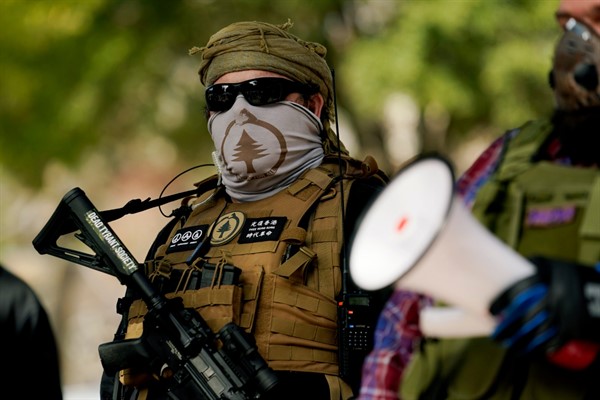The storming of the Capitol in Washington, D.C., by pro-Trump insurrectionists earlier this month was both shocking and utterly unsurprising. After all, for anyone paying attention to the rioters’ social media posts in the days and weeks leading up to the event, they made their intentions clear. A subset of the participants appeared to have technical training, and had laid meticulous plans well in advance of Jan. 6.
The attack on the Capitol, then, was a culmination—not just of the insurrectionists’ efforts to train and arm themselves for a violent revolt, but also of years of recruitment and radicalization by right-wing militias and other violent groups in the United States, all too often egged on by Donald Trump and his supporters.
But Jan. 6 was also the beginning of a dangerous new era in which attacks by violent extremists could become commonplace, says Colin Clarke, a specialist on domestic and transnational terrorism at the Soufan Group, an intelligence and security consultancy. This week on Trend Lines, Clarke joins WPR’s Elliot Waldman to discuss the rising threat of far-right extremism in the United States, and what the future of this movement could look like after Trump leaves office. Click here to read a partial transcript from the interview.
Listen:
Download: MP3
Relevant Articles on WPR:
Deplatforming Pro-Trump Extremists Could Drive Them Underground
Will America’s Fever Break After the Pro-Trump Siege of the Capitol?
Jihadism May Be Waning, but New Forms of Violent Extremism Are Emerging
How to Tackle the Urgent Threat of Transnational Right-Wing Extremism
Trend Lines is edited by Peter Dörrie, a freelance journalist and analyst focusing on security and resource politics in Africa. You can follow him on Twitter at @peterdoerrie.
To send feedback or questions, email us at podcast@worldpoliticsreview.com.




